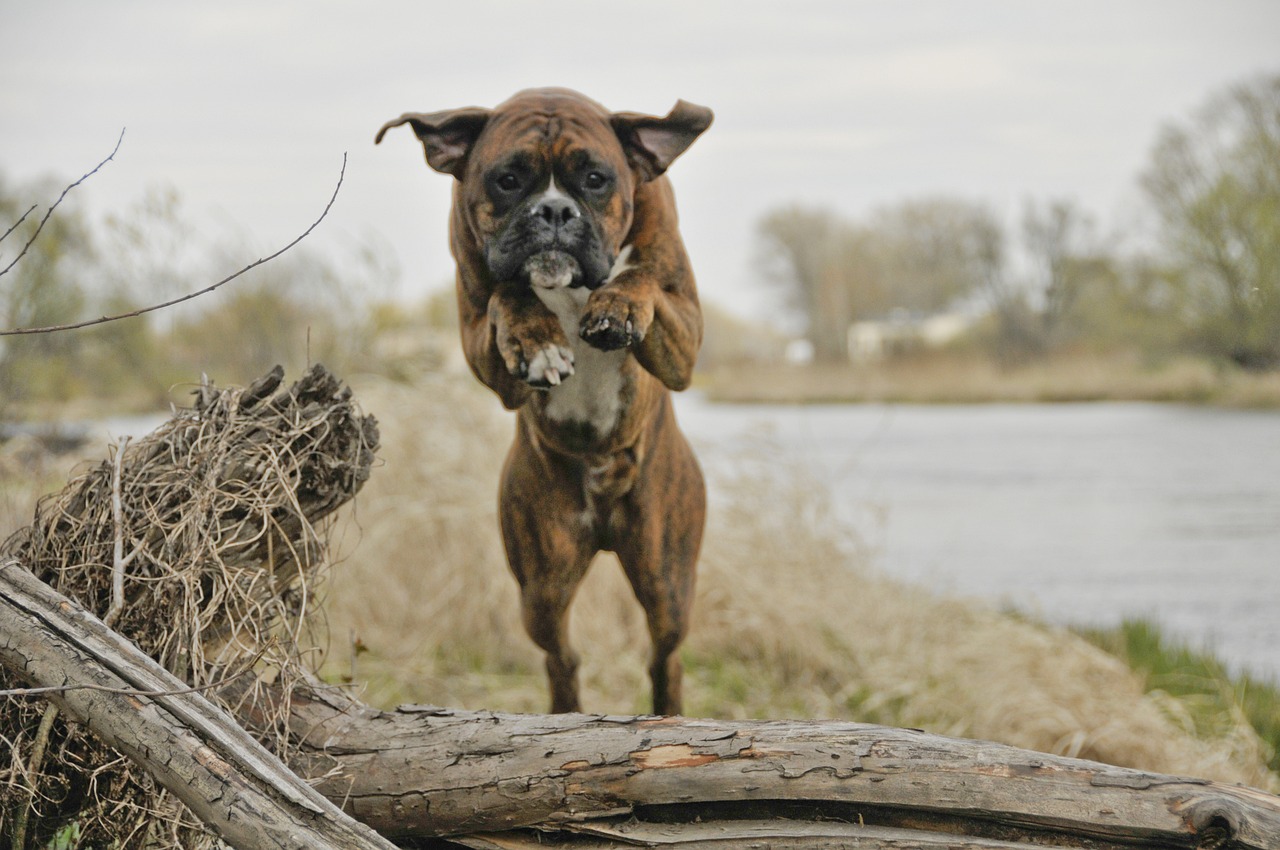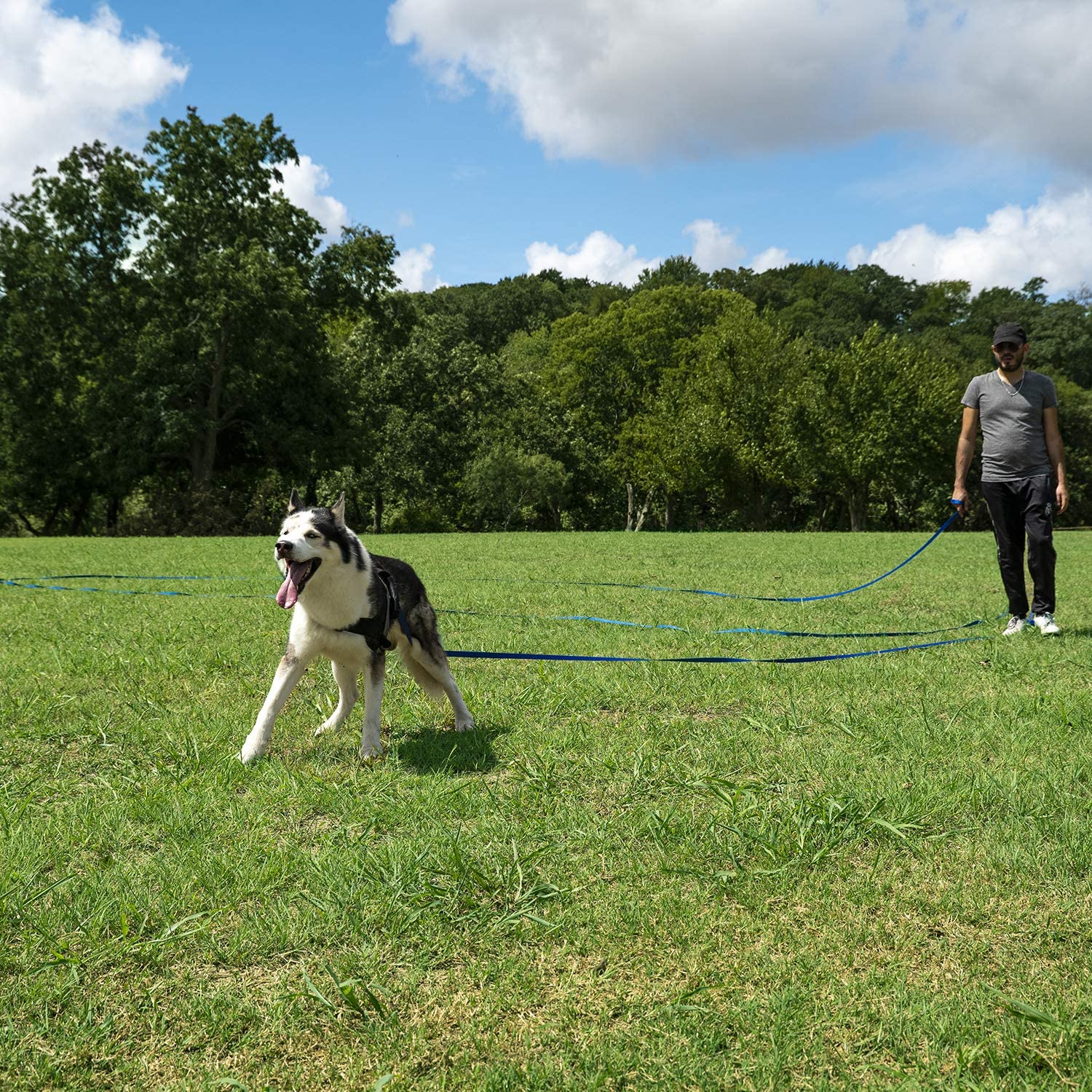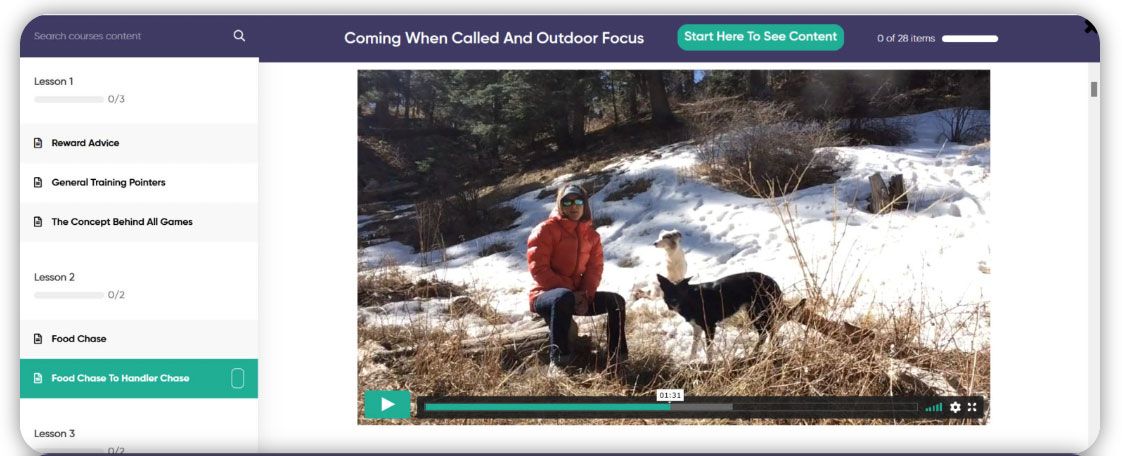
As a boxer owner, one of the most important things you can teach your furry friend is to come when called. Not only does it promote obedience and a stronger bond between you and your pet, but it also ensures their safety in potentially dangerous situations. However, training your boxer to come when called takes time, patience, and consistency.
In this article, we’ll discuss effective training techniques that will help you teach your boxer to come when called, as well as tips for reinforcing this behavior over time. With dedication and persistence, your boxer will soon be a reliable and obedient companion.
Note: For a complete training, we highly recommend this SpiritDog Online Training Course “Coming When Called”.
1. Start with a Strong Foundation
Before you begin training your boxer to come when called, it’s crucial to establish a strong bond with your pet. Spend time playing with your dog, engaging in activities they enjoy, and providing positive reinforcement through praise and treats. Building trust and a strong connection with your boxer will make them more likely to respond positively to your commands.
2. Choose a Distinct Command Word
Select a specific word or phrase for the recall command, such as “come” or “here.” Ensure that the command is distinct from other commands you use and that all family members use the same word consistently. Consistency is critical to avoid confusing your boxer and ensuring that they understand what you expect from them.
3. Begin Training Your Boxer in a Controlled Environment
Start training your boxer to come when called in a controlled, distraction-free environment like your home or a fenced yard. In the early stages of training, it’s essential to minimize distractions to help your dog focus on learning the new command. As your dog becomes more reliable in responding to the recall command, gradually introduce distractions and practice in various environments.
4. Use Positive Reinforcement with Your Boxer
When training your boxer to come when called, always use positive reinforcement techniques. Reward your pup with praise, treats, or playtime when they respond to your recall command. This will help create a positive association with the command and motivate your dog to respond consistently. Remember to be patient and consistent in your training, as it may take time for your dog to master the recall command.
If you’re using treats, these are currently the most popular training treats on Amazon.
5. Gradually Increase Distance and Distractions
As your boxer becomes more reliable in responding to the recall command in a controlled environment, begin to increase the distance between you and your dog during training sessions. Practice calling your dog from various distances and gradually introduce distractions, such as other dogs, people, or toys. This will help your dog learn to respond to the command even in challenging situations.
Related: Looking for the fastest way to train your boxer to come when called? Try this video course.
6. Make Yourself Interesting and Rewarding to Your Boxer
To encourage your boxer to come when called, make yourself more appealing and rewarding to your dog. Use an enthusiastic, high-pitched voice when calling your dog, and reward them with a treat or praise when they respond. You can also try running away from your dog when calling them, as this can entice your dog to chase after you and respond to the recall command.
7. Never Punish Your Boxer for Coming When Called
It’s essential to avoid punishing your boxer if they do not immediately respond to the recall command or if they come to you slowly. Punishing your dog can create a negative association with the command and make them less likely to respond in the future. Instead, be patient and continue to practice and reinforce the command using positive reinforcement techniques.
8. Practice the Recall Command Regularly with Your Boxer
Consistent practice is crucial for training your boxer to come when called. Incorporate recall training into your dog’s daily routine, and practice the command in various environments and situations. This will help reinforce the behavior and make it more reliable over time.
9. Use a Long Training Leash on Your Boxer
When transitioning from a controlled environment to a more open space, consider using a long training leash to maintain control over your boxer while they learn to respond to the recall command. This will help you avoid losing control of your dog and provide a safety measure as you gradually increase the distance and distractions during training sessions.
This is the most popular long training leash on Amazon.
10. Be Patient and Persistent with Your Boxer
Training your boxer to come when called takes time, patience, and persistence. Some dogs may learn the command quickly, while others may require more time and consistent practice. Be patient with your dog and maintain a positive attitude during training sessions. Remember that every dog is unique, and the key to success is consistent practice and positive reinforcement.
11. Use a Professional Online Boxer Training Course
While this article provides many helpful tips for training your boxer, you can increase your chances of success by enlisting the help of a professional online dog trainer. We love the SpiritDog online courses, since its includes unlimited questions with a real dog trainer.
You can check out their Teach Your Boxer to Come Online Course Here
In conclusion, teaching your boxer to come when called is an essential aspect of their training and can lead to a stronger, more fulfilling relationship between you and your furry friend. Remember to always use positive reinforcement and consistency in your training techniques, and to be patient and understanding throughout the process. With time and effort, your boxer will learn to come when called, which will provide peace of mind in any situation. So, whether you’re at the park, on a hike, or just in your backyard, you can rest assured that your boxer will be by your side when you need them most.
More Frequently Asked Questions For Training Your Boxer
1. How often should I train my boxer?
The frequency of training for your boxer depends on several factors, including their age, level of fitness, and the goals of the training program. Generally, adult boxers should be trained at least three to four times a week, while puppies should only be trained for short periods of time, no more than 10-15 minutes a day, until they reach six months of age. Older boxers may require less intense training and longer periods of rest in between sessions.
It is important to remember that overtraining can be detrimental to your boxer’s health and performance. Always allow your dog time to rest and recover after each training session, and avoid training them when they are tired or ill.
2. What are some essential exercises to include in my boxer’s training routine?
Boxers are high-energy dogs that require plenty of physical activity to stay healthy and happy. There are several exercises that you should include in your boxer’s training routine to keep them in top condition:
Running: Boxers love to run, so make sure your dog gets plenty of opportunities to stretch their legs. Running also helps improve cardiovascular health and endurance.
Agility training: Agility exercises, such as jumping over hurdles and navigating obstacle courses, can help improve your boxer’s coordination, balance, and speed.
Strength training: Building muscle is essential for maintaining your boxer’s overall health and fitness. Incorporate exercises that target the chest, back, legs, and core muscles.
Mental stimulation: Boxers are intelligent dogs that require mental stimulation to prevent boredom and destructive behavior. Incorporate activities such as obedience training, puzzle games, and scent work into your boxer’s routine.
Socialization: Boxers are social dogs that thrive on human interaction and companionship. Regular socialization with other dogs and people can help prevent aggression and anxiety.
3. How can I prevent my boxer from becoming aggressive during training?
Boxers are generally friendly and affectionate dogs, but like all breeds, they can become aggressive if they feel threatened or scared. To prevent aggression during training, follow these tips:
Start training early: Socialization and obedience training should begin when your boxer is still a puppy. This will help them become accustomed to new people, animals, and situations, reducing the likelihood of aggressive behavior later on.
Use positive reinforcement: Reward-based training methods are the most effective way to train your boxer. Offer plenty of praise, treats, and affection when your dog performs a desired behavior, rather than punishing them for mistakes.
Avoid physical punishment: Physical punishment, such as hitting or kicking your dog, can cause fear and aggression. Instead, use verbal cues and body language to communicate with your dog.
Be consistent: Consistency is key when training a boxer. Use the same commands and rewards every time you train, and be patient with your dog as they learn.
Be aware of your dog’s body language: Boxers can communicate their feelings through their body language. Watch for signs of stress, such as growling, baring teeth, or stiffening of the body, and stop training if your dog appears agitated.
In conclusion, training your boxer requires a combination of physical exercise, mental stimulation, and positive reinforcement. Be consistent, patient, and always prioritize your dog’s health and well-being. With the right approach, your boxer can become a well-behaved, obedient companion that you’ll enjoy spending time with for years to come.
4. What’s the best online course for teaching a boxer to come when called?
At iHeartDogs, we recommend the SpiritDog online course “Coming When Called.” The course includes unlimited questions with a real dog trainer.
iHeartDogs is reader supported. Our articles contain affiliate links where we are paid a small commission for linking to a product at no additional cost to the reader.



 Toledo, United States.
Toledo, United States.